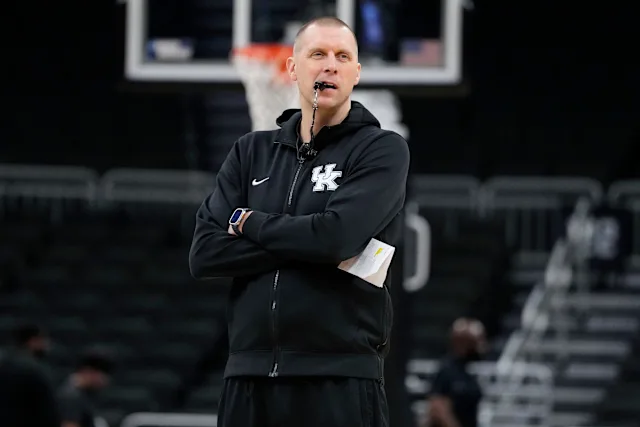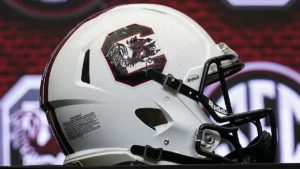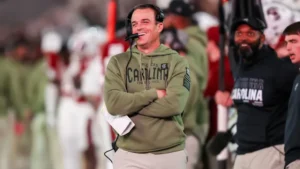
Mark Pope of Kentucky basketball welcomes the transfer portal as a departure from the John Calipari era
The landscape of college basketball has changed dramatically over the past decade, and one of the most notable transformations is the rise of the transfer portal. This digital platform, introduced in 2018, allows athletes in NCAA Division I sports to enter their names and seek opportunities to transfer to other programs. The transfer portal has been a game-changer, offering both challenges and opportunities for coaches and players alike.
In the context of Kentucky basketball, one coach has embraced the transfer portal as a vital tool to rebuild and reshape the Wildcats’ program: Mark Pope. Pope, who took over the head coaching duties at Kentucky after the John Calipari era, is steering the program in a new direction, emphasizing a strategy of building through both high school recruits and transfers.
This shift marks a departure from Calipari’s well-established “one-and-done” philosophy that largely dominated Kentucky’s basketball program during his tenure. For the Wildcats, Pope’s embrace of the transfer portal is part of a broader strategy to adapt to changing trends in the sport, balancing player development with immediate roster needs.
The Calipari Era: Dominating with One-and-Done Talent
To understand why Mark Pope’s approach is such a departure from the past, it’s important to reflect on the John Calipari era at Kentucky. Hired in 2009, Calipari quickly made a name for himself by assembling elite recruiting classes, often centered around high school stars who would spend only one season in Lexington before entering the NBA draft. Calipari’s model, often referred to as the “one-and-done” system, led to consistent success for Kentucky on the national stage, including an NCAA title in 2012.
Under Calipari, Kentucky became a breeding ground for NBA talent, with players like Anthony Davis, John Wall, and Karl-Anthony Towns entering the league after brief but memorable stints at Kentucky. Calipari’s philosophy was straightforward: recruit the best high school talent, develop them briefly, and let them go to the NBA. This approach resulted in annual turnover on the roster, with Kentucky’s team often filled with incoming freshmen who were as raw as they were talented.
However, over time, the limitations of the “one-and-done” model began to surface. Kentucky’s reliance on elite freshmen meant that the program lacked consistent upperclassmen leadership and chemistry. The Wildcats also faced challenges in competing against programs that emphasized veteran players, team-oriented basketball, and continuity. Despite strong recruiting classes, Calipari’s teams often fell short in the NCAA Tournament, as the quick turnover of talent made it difficult to sustain a long-term competitive advantage.
As a result, the rise of the transfer portal marked a significant turning point for college basketball, and ultimately, for Kentucky. While Calipari had experimented with transfers during his tenure, his primary focus remained on high school talent, especially the top-tier recruits who were NBA-bound. When the transfer portal became a central feature of college basketball, the landscape shifted, and Pope quickly recognized the need to adapt.
Mark Pope Takes Over: A Shift in Philosophy
When Mark Pope became the head coach of Kentucky in 2024, he inherited a program that was at a crossroads. Calipari’s “one-and-done” model had run its course, and the Wildcats were searching for a new identity. Pope, who had previously been the head coach at the University of Utah, was well aware of the changes in college basketball, especially regarding player movement. He had seen firsthand how the transfer portal had transformed the way programs built their rosters, and he understood that Kentucky had to evolve to keep pace.
Unlike Calipari, who had built his teams around highly ranked freshmen, Pope has embraced a more balanced approach, one that combines high school talent with experienced transfers. This strategy allows him to build a team that not only has fresh, young talent but also a level of experience and maturity that can be critical in close games and high-pressure moments. Pope’s ability to integrate transfers into the program has already started paying dividends, as he has brought in a number of skilled players from the portal, filling critical gaps in Kentucky’s lineup.
The Impact of the Transfer Portal on Kentucky Basketball
The transfer portal has reshaped how teams build their rosters, and Pope’s willingness to embrace it is a testament to his understanding of the current college basketball environment. The benefits of the portal are clear: it provides teams with the ability to fill immediate needs, adds depth, and allows for roster flexibility. For Kentucky, a program that is used to competing at the highest level, the ability to plug gaps with experienced players from the portal is invaluable.
Under Pope, Kentucky has been able to address several key positions through transfers, particularly at the guard and forward spots. For instance, the Wildcats brought in several experienced players with proven track records at other programs. These transfers not only provide immediate help but also bring with them a level of maturity that is often lacking in a team full of freshmen. Transfers can help provide leadership and stability, qualities that are crucial in the grind of a long college basketball season.
Furthermore, the transfer portal allows Kentucky to diversify its roster-building strategy. Pope is no longer limited to just recruiting the top high school talent. Instead, he can target experienced players who can contribute right away, offering Kentucky a more well-rounded team. This approach helps balance the volatility of the recruiting process, where even the most promising high school stars can struggle to adjust to the college game.
The Challenges of Embracing the Transfer Portal
While the transfer portal presents numerous advantages, it also comes with its challenges. One of the biggest hurdles is roster turnover. Unlike the traditional recruiting cycle, where teams can expect to have players for multiple years, the transfer portal can lead to a high rate of player movement. Players who don’t fit into the program’s system or who are looking for more playing time can leave at any time, creating uncertainty within the roster.
Moreover, the influx of transfers can impact team chemistry. It’s one thing to recruit players who have been playing together for a year or two; it’s another to integrate players who are joining the team for the first time. For Kentucky, Pope has had to focus on developing chemistry among players who come from different systems and backgrounds. The ability to build a cohesive unit while dealing with the uncertainty of the transfer portal is a major challenge for Pope.
Another challenge is the changing nature of recruiting itself. With high school talent now competing with experienced transfers for roster spots, Kentucky must be careful not to neglect its traditional recruiting pipeline. Pope has had to balance the immediate needs of the roster with the long-term goals of developing young players. Striking this balance will be crucial as he looks to build a program that is not only competitive in the short term but also sustainable over time.
A New Era at Kentucky Basketball
Mark Pope’s embrace of the transfer portal represents a significant shift in the philosophy and direction of Kentucky basketball. It marks a departure from the high-profile, one-and-done model that defined the Calipari era. Pope’s more nuanced approach—focusing on both high school recruits and experienced transfers—offers Kentucky a chance to compete at the highest level while building a more balanced and sustainable program.
This new era at Kentucky is not without its challenges, but Pope’s ability to adapt to the changing dynamics of college basketball gives the Wildcats a strong chance to succeed. As the transfer portal continues to play an integral role in college basketball, Pope’s willingness to embrace it signals a new chapter for Kentucky, one that blends tradition with innovation.
While Calipari’s legacy will always be a part of Kentucky basketball’s history, Mark Pope’s vision for the future is one that looks forward—one that recognizes the realities of modern college basketball and leverages the tools at hand to build a championship-caliber team. Whether or not this new strategy leads to a national title remains to be seen, but one thing is certain: Mark Pope’s approach to Kentucky basketball is a clear departure from the past, and it is shaping up to be an exciting and dynamic future.





